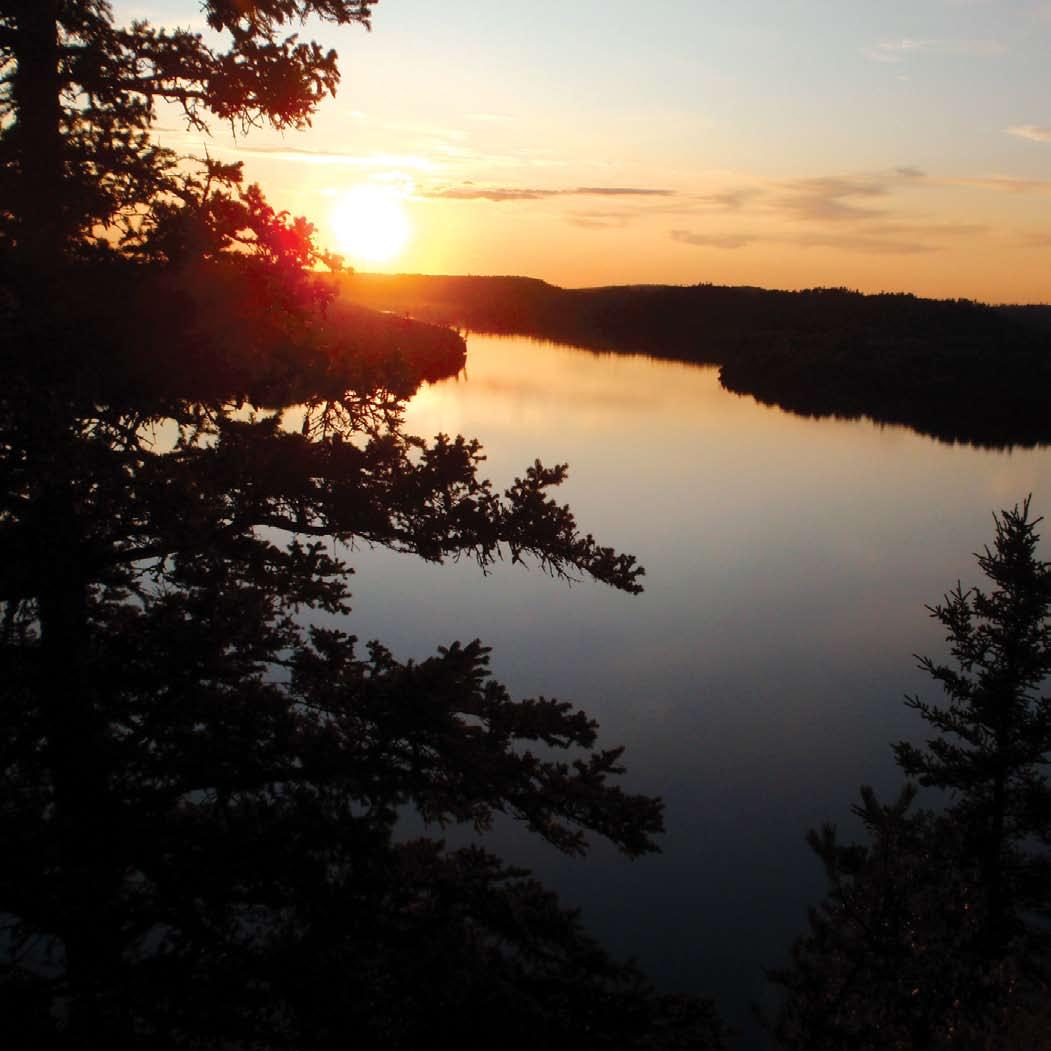


















































Summer has sweltered just about everywhere but here. While the rest of the Midwest has suffered through a summer of record-breaking high temperatures, we’ve enjoyed the natural air conditioning provided by Lake Superior. Up here, on a hot day temperatures are in the 80s.
The Northern Wilds is a great place to chill out—and not just because we have great weather. Where else can you find so many cool things to do? Between Lake Superior, the rugged hills rising from its shores and the lake-studded wilderness known as the canoe country, you can get wet, climb high and be wild.
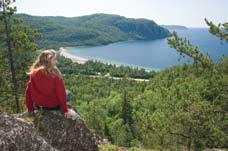
We did all of that in June, when Northern Wilds visited Ontario, courtesy of Thunder Bay Tourism. Kate Watson, Jim Boyd, Amber Pratt and Shawn Perich spent four days seeing the sights and meeting the people involved in tourism and community development from the border at Pigeon River all the way to the city of Marathon.

We’ve shared some photos from the trip in this issue. In upcoming issues, we’ll have more detailed stories about the places we visited and what we learned along the way. We were impressed with the Prince Arthur’s Landing waterfront development in Thunder Bay, as well as community revitalization efforts taking place in the former mill towns along the North Shore. Much of Lake Superior, its islands and shores are included in Canada’s first National Marine Conservation Area and comprised the largest freshwater protected area in the world. It is easy to envision this area becoming a prime destination for adventure recreation.
For now, Thunder Bay and the Ontario North Shore’s many wonders are waiting to be discovered— even by many folks who love Lake Superior. To cross the border, all you need is a passport—required to reenter the United States—and a clean criminal record. If you have a conviction, such as for DUI, call Canada Customs in advance of your trip. If the conviction is more than five years old, you will likely be allowed to enter Canada. For the vast majority of Northern Wilds adventurers, crossing the border is remarkably easy. So head north and chill out in the wildest corner of the Northern Wilds.
—Shawn Perich and Amber Pratt











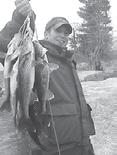
















Construction of a new visitors center at Tettegouche State Park is scheduled to begin this summer with completion projected for July 1, 2013. The current 4,000square-foot building will be closed in the interim, though the park will remain open. A 10,500-square -foot building will rise in its place, though it will be built farther from the road than the current building, making for an excellent view of Lake Superior.
“We’ve been planning this for 10 years,” said park manager, Philip Leversedge. “The current building is only 26 years old, but when it was built, they had no idea how
popular Tettegouche would become.”
The new building will include a fireplace in the main lobby, a dedicated interpretive display room, a gift shop, administrative offices and a small auditorium. The outdoor area will also have a small amphitheater and a picnic shelter. When the current building, which includes a rest area for Highway 61 motorists, was constructed in 1986, it was the first time a state parks department and state roads department partnered together to share a joint building. The partnership between DNR and MnDOT will continue, and the project’s $7 mil-
lion bill is being shared. Minnesota DNR is covering about $4 million, and MnDOT is covering the other $3 million.
The current visitors center/rest area will be closed during construction. The park’s entrance will be temporarily shifted to the west side of the Baptism River and the inland side of the road. A small trailer will be set up and serve as a park entrance station, where most park transactions, such as camping reservations, will be handled.
“It’s going to be a little inconvenient for visitors and for us, but the payoff in the end will be worth it,” Leversedge said.
faring better than rest of state
The Minnesota Pollution Control Agency and the Minnesota DNR issued joint reports on the condition of the state’s wetlands.
There are 10.6 million acres of wetlands statewide, according to the report. The initial survey, which focused on marshes and ponds, showed that half of the wetlands were in poor condition.
“Even though 10 million acres of wetlands seems like a lot, Minnesota has lost about half of its wetlands since pre-settlement days,” said Doug Norris, DNR wetland program coordinator. “We need to be diligent about protecting what we have left.”
The reports provide a comprehensive view of the state’s wetlands.
In northeastern Minnesota, most of the pre-settlement wetlands still exist and are in good condition. But in the western and southern regions of the state, many wetlands have been lost, and those that remain are in poor condition.
Wetlands serve several functions. They provide habitat for wildlife, filter pollution and sediment, protecting water quality downstream, and can store water during intense rain events and snow melt, lessening the impacts of floods.

The two new timber wolf pups at the International Wolf Center in Ely were slated to join the exhibit pack on July 30, according to curator Lori Schmidt. New wolf pups are added once every four years.
The pups, a larger male named Boltz and a female named Luna, were born in March. The wolves were not born at the center, nor are they of the same litter. The IWC gets them from registered breeding facilities.
They are on the verge of becoming juveniles, said Schmidt, who looks for three things when determining when to introduce pups to the pack.
The young wolves need to be between 35 to 50 pounds. They also have to be committed to eating large volumes of food in one sitting. The third thing is interaction with the adults. Schmidt said the pups will join mature wolves Aidan and Denali.
“They greet them every day through the fence,” Schmidt said.
One good sign is that the pups have been licking at the sides of the fence, which has prompted one of the adults to regurgitate food for them.
Schmidt can’t wait too long to add the pups to the pack. That’s because mature wolves get a “nurturing” hormonal surge mature around April that typically wanes off by August.
Working to bring modern, environmentally responsible development of copper, nickel, and precious metals to Minnesota.
There were fewer ruffed grouse heard drumming in Minnesota this spring, according to the Minnesota DNR. But there’s no real cause for alarm. The ruffed grouse population typically runs in 10-year cycles, with the last peak in 2009, said Mike Larson, DNR grouse biologist. He noted that hunter harvest remained relatively high last fall.
During the spring drumming count survey, there was an average decline of 24 to 60 percent in the northeast survey region, which encompasses Minnesota’s Arrowhead Region and has the highest concentration of ruffed grouse in the state.
In late June, the Minnesota DNR released its long-term management plan for ruffed grouse. It can be viewed at www.mndnr.gov/grouse. The plan seeks to increase the number of hunters in the state by improving habitat and hunting opportunities.

“Those strategies included improved access to hunting land, better information for hunters and education for new hunters, and focused input to the timber planning process that will ensure that grouse habitat needs are wellpreserved and considered in all forest planning processes,” said Ted Dick, DNR grouse coordinator.
The North Country Trail Association has asked Congress to change the route of the National Scenic Trail, incorporating the Boundary Waters’ Kekekabic Trail and the Superior Hiking Trail, both of which have been unofficially considered part of the trail for several years. But in order to acquire grant monies to complete the 150 to 200 miles of trail through Itasca, St. Louis and Lake coun -
ties -- from Remer to the west end of the Kekekabic Trail—the route change needs to be made official. Rep. Collin Peterson has introduced H.R. 5980 and Senator Amy Klobuchar introduced S. 3319 to authorize the re-route. Hiking enthusiasts are encouraged to contact their representatives and urge support for the bills.

Local for Less 9 holes + cart $23 18 holes + cart $35 Present this coupon for up to 4 players. Five Minutes from Downtown Grand Marais 218-387-9988
Ontario has launched a new initiative called Ontario Wood to promote locally-produced wood products at lumberyards, hardware stores and other retailers of wood products. The Ontario Wood brand seeks raise awareness of the diversity and variety of Ontario’s wood products and of the sustainability of the province’s lumber industry, which supports 200,000 jobs in more than 260 communities across Ontario.
Products carrying the logo must come from trees that are indigenous or commercially grown in Ontario, and all wood-product processing must take place in the province. There are more than 40 manufacturers that have been licensed to use the brand, including sawmills, small artisans and manufacturers of hardwood floors and doors.
The brand’s aim is to make Ontario Wood the preferred choice for consumers. For more information, go to ontariowood.ca.
The record June flood that caused devastating damage in Duluth, left its mark on Jay Cooke State Park, and it doesn’t look like the park will reopen before November at the soonest.
“It’s going to depend on how quickly MNDOT can reopen State Highway 210,” said DNR spokesperson Cheri Zeppelin.
The road was damaged severely by the flood, which left the road impassable, with mudslides and large washouts. The road provides the only vehicular access to the park. Camping reservations at the park through Oct. 31 have been canceled, with full refunds being issued.
The park’s historic Swinging Bridge
was also damaged by high water on the St. Louis River. Zeppelin said restoring the bridge is a high priority, though it’s unclear when it will be repaired, as engineers still need to assess the damage. It’s not the first time the bridge, originally built in 1924, has been damaged by floods. In 1950, the bridge was destroyed by what is now the second largest flood on record. It didn’t reopen until 1953.
Also, a section of the Willard Munger State Trail, from 210 in Thompson to West Duluth, was closed due to flood damage. The DNR is urging folks to stay away from both the closed areas.


On July 4, Gunflint Lodge opened the state’s first zip line, dubbed the Towering Pines Canopy Tour. Gunflint Lodge owner Bruce Kerfoot said he got the idea for a zip line from friends in the adventure tourism industry in the North Carolina mountains, where the tours have become a popular side trip for the whitewater-rafting crowd.
Kerfoot’s course, with eight runs, is not visible from the Gunflint Trail or any area lakes, he said. The tour offers a birds’ eye view of Gunflint Lake, riding 50 feet or higher from each platform. The longest run is about 800 feet. The tours, limited to groups of 10, are two and a half hours long and are led by a pair of naturalists. For more information, go to www. gunflint.com.
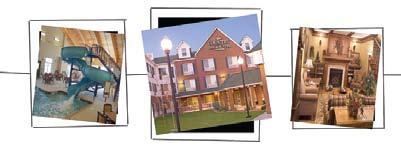

Some of the North Shore’s best agate picking is near Beaver Bay and Silver Bay. The massive gravel bar at the mouth of the Beaver River is a great place to find agates. Check with the information centers in Beaver Bay and Silver Bay for directions to other area beaches and gravel pits where agates abound.
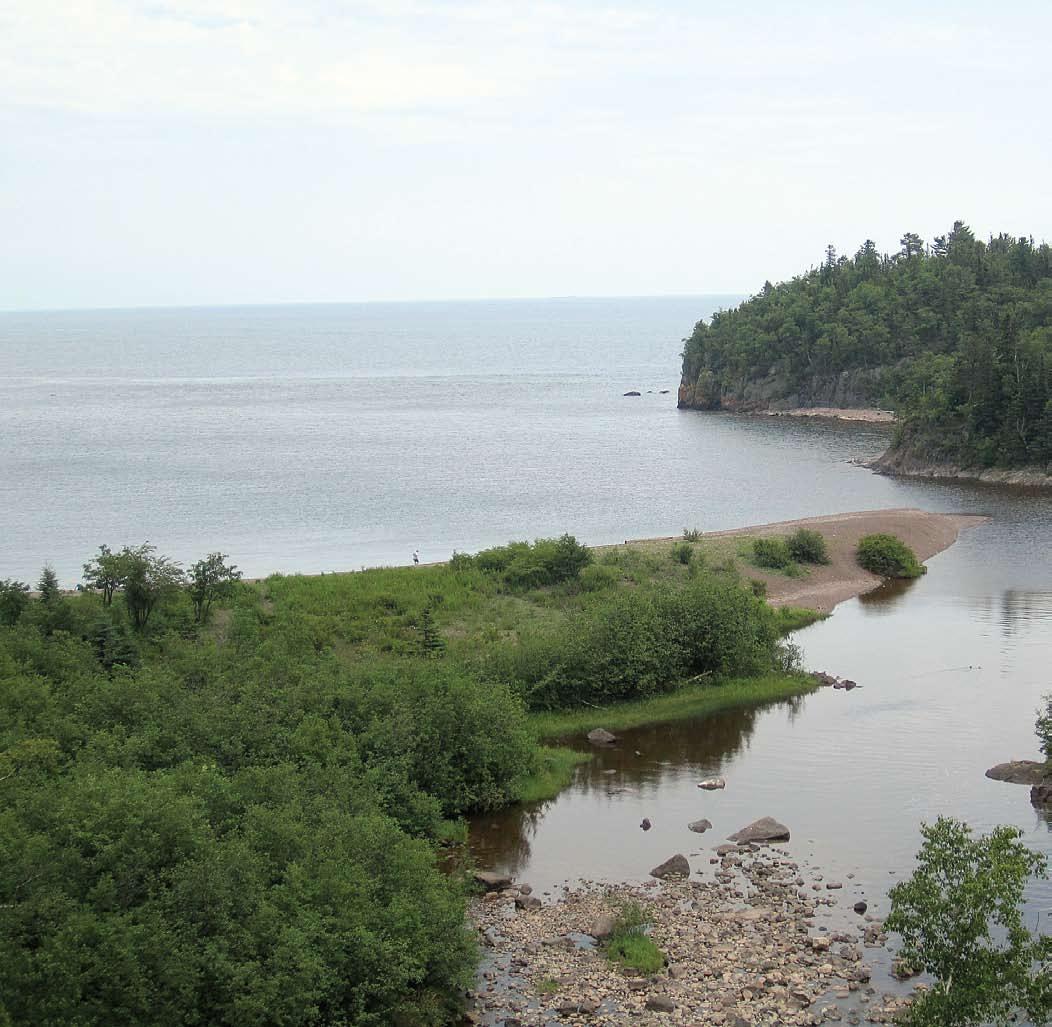








May 26-Oct. 14
chik-Wauk Museum & Nature center Gunflint Trail 218-3889915 www.chikwauk.com
June 7-Se P t. 9
vision circle: the Art of roy thomas-A retrospective exhibition Thunder Bay, Ont. www.ahnisnabae-art.com
July 28 – aug. 4
big fish contest Buck’s Hardware Hank, Grand Marais www.buckshardware.net
aug. 1-5
tennis tournament Grand Marais www.cookcountytennis.org
aug. 2-5
fisherman’s Picnic Downtown Grand Marais www.gmlions.com
aug. 3-6
blueberry blast Nipigon, Ont. www.nipigon.net
aug. 3, Friday bird banding Wolf Ridge 218-353-7414
aug. 4, Saturday
fisherman’s Picnic trail run & Walk 2012 Pincushion Mountain Trailhead, Grand Marais 9 a.m. www.pincushiontrails.org
batty about bats www.dnr.state.mn.us
Minnesota Mining: An Atv trail ride through history Soudan 218-753-2245
aug. 5 – 6
23rd Annual festa italiana Thunder Bay concatus@italiancc.com
aug. 5, Sunday brewhouse triathlon Duluth www.brewhousetriathlon.com
aug. 8, Wedne S day eagles of Minnesota Bear Head Lake State Park 218-365-7229
st. louis river canoe trip: A scientific exploration of Water Quality Soudan www.mndnr.gov/soudan
aug. 9, t hur S day
batty about bats Soudan www.dnr.state.mn.us
lake superior Kayaking at split rock lighthouse Wolf Ridge 218-353-7414
aug. 9-12
rendezvous days and Powwow Grand Portage www.nps.gov/grpo
aug. 10-11
tori celebration and fall Music festival Finland www.heartofthenorthshore.com
"heart of the Woods Quilters" Quilt show Ely www.ely.org
aug. 10-12
live from the rock folk festival Red Rock, Ont. www.livefromtherock.com
bayfront blues festival Duluth www.bayfrontblues.com
aug. 11, Saturday Paju Mtn. run Red Rock, Ont. www.redrocktownship.com
aug. 11-12
ely Watercross www.iwausa.org
aug. 12, Sunday relay for life Silver Bay 218-226-4576
aug. 17-19
epic Adventures Mountain bike festival Nipigon, Ont. www.epicmtbfestival.com
Men’s invitational golf tournament Silver Bay www.silverbaygolf.com
aug. 18, Saturday gitchigami bike ride Gooseberry State Park www.ggta.org
Night sky of the Northwoods Soudan www.dnr.state.mn.us the duluth triathlon www.duluthtriathlon.com
aug. 18-19
Art in bayfront Park Duluth www.artinbayfrontpark.com
aug. 19, Sunday
Run for epilepsy Thunder Bay, Ont. tlewis@avenueii.com
aug. 21, t ue S day
lake superior Kayaking at split rock lighthouse Wolf Ridge 218-353-7414
aug. 23, t hur S day
lake superior Kayaking at split rock lighthouse Wolf Ridge 218-353-7414
aug. 24-25
lake superior dragon boat festival Duluth www.lakesuperiordragons.com
aug. 24 – 26
thunder bay ribfest 2012 Thunder Bay www.thewaterfrontdistrict.ca
aug. 26, Sunday superior Man triathlon Duluth www.superiormantri.com
aug. 30, t hur S day
lake superior Kayaking at split rock lighthouse Wolf Ridge 218-353-7414
Se P t. 2, Sunday
sawtooth challenge bike race Grand Marais www.sawtoothchallenge.org
Se P t. 7-9
harvest Moon festival Ely 218-365-6123
Se P t. 7-30
Plein Air grand Marais www.grandmaraisartcolony.com
Se P t. 8-9
radio Waves Music festival Grand Marais www.wtip.org
Se P te M ber 8
2012 riverfest Thunder Bay www.thunderbay.ca/Living/ recreation_and_parks/Events/ riverfest.htm (807) 625-2487
Se P t. 13-16
Mountain stage and unplugged iX: the Northern harvest Grand Marais www.northhouse.org
Se P t. 14-15
North star expo Itasca County Fairgrounds Grand Rapids 218-722-5013
Se P t. 14-16
hawk Weekend festival Hawk Ridge Nature Reserve Duluth www.hawkridge.org
Se P t. 15, Wedne S day
Northshore inline skating Marathon Duluth www.northshoreinline.com
M club golf scramble
Silver Bay www.silverbaygolf.com
Se P t. 21-22
oktoberfest Duluth www.oktoberfestduluth.com
Se P t. 22, Saturday
4th Annual give the gift of life Walk Thunder Bay, Ont. www.kidney.ca/ontariowalk
Se P t. 22-23
duluth Airshow Duluth www.duluthairshow.com
Se P t. 23, Sunday
2012 thunder bay Marathon Miles with the giant Thunder Bay info@thunderbaymarathon.com
Se P t 27 – 30
biindigaate film festival Thunder Bay biindigaate@gmail.com
Se P t. 29-Oct. 2 bay street film festival Thunder Bay www.baystreetfilmfestival.ca
Se P t. 30, Sunday cibc run for the cure Thunder Bay, Ont. www.cbcf.org
During Fisherman’s Picnic in Grand Marais, Aug. 2-5, the downtown is filled with visitors, vendors, “crazy days sales” and daily activities and contests. There’s also a parade, fireworks, live music, outdoor dances, rides for kids and much more. The Grand Marais Lions Club, which sponsors the event, holds a raffle, which includes a grand prize of $10,000 and lots of other prizes. The Big Fish contest at Buck’s Hardware Hank offers prizes in six fish species categories but you must be weighed in by closing at noon on Aug. 6. There’s more fun competition with Hoopin’ in the Harbor, plus tennis and softball tournaments and a trail run. Citizen and Senior of the Year will also be announced, thanks to the Grand Marais Lionesses Club. And not to forget—the Lions Club serves up handbreaded, deep-fried Lake Superior Herring-on-a-Bun Fishburgers by the hundreds. For the complete schedule of events, see www. gmlions.com.
Enjoy a day at the lake with the Two Harbors Kayak Festival, featuring activities for the whole family. Try your luck in one of the four races to choose from: youth races, Emma Challenge Tandem Sprints, Betty’s Pies 5-Mile Race, and the Great River Energy Kayak & Canoe Marathon, all with different age groups and boat categories. There will also be stand-up paddle boarding demos and classes, a treasure hunt, climbing wall, live music, food, kids kayaking, and beginning level instructional tours. Festival will be held at Burlington Bay in Two Harbors. For more info, visit www. kayakfestival.org.
The first annual Bayfront Jam Festival in Duluth brings two days of great music on the lake. Saturday’s lineup includes the Summerland Tour 2012 artists Sugar Ray, Lit, Gin Blossoms, Everclear, and Marcy Playground. Sunday’s lineup includes the 2011 Bluegrass Entertainers of the Year, Steve Martin and the Steep Canyon Rangers. Also performing are Pert Near Sandstone, and 4onthefloor. General admission for both nights is $38. For information about the festival, visit www.bayfrontjam.com.
Step back into a time when Canadian furs from wintering posts were brought down to the historic Grand Portage. Re-enactors from across the country come together to provide craft demonstrations, music, dancing, and hands-on workshops in this annual celebration. The event is also held in unison with the Rendezvous Powwow, sponsored by the Grand Portage Band of Lake Superior Chippewa. For more info, visit www.nps.gov/grpo.
Jam out to 30 different musicians on four different stages at the Live From the Rock Folk Festival in Red Rock. Along with live music, the festival also includes children’s activities, a 16-seat voyageur canoe, open mic performances, and craft workshops. For more info, visit www.livefromtherock.com.
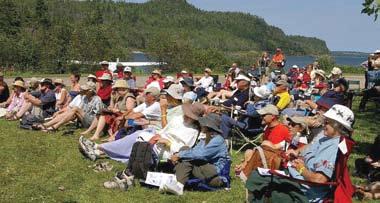
Red Rock’s 30th annual Paju Mountain Run will be held Aug. 11 in conjunction with the Live From the Rock Folk Festival. The 11.2K race climbs 715 feet from the town to the top of Paju Mountain. There are competitive and noncompetitive races, with several age divisions. Awards will be given and a luncheon will be held after the event at the Red Rock Legion. For more info, visit www.redrocktownship.com.

Aug. 17-19
Devote a weekend to mountain biking at the Epic Adventures Mountain Bike Festival in Nipigon. Three different categories will be held: the pump track/dirt jump jam session on Friday, “8-hour enduro” race on Saturday, and the “last man/woman standing” event on Sunday. Prizes will be awarded, including a cash prize for the top male and female. For more info, visit www.epicmtbfestival.com.
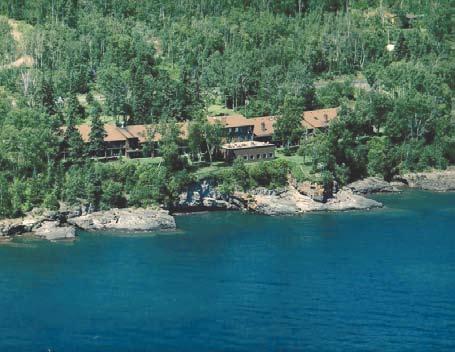


August is the month of Triathlons with 3 different Triathlon’s held in Duluth. The Brewhouse Triathlon is held on Aug. 5 in Duluth and offers a short and long course for individual racers and a long course for relay racers. For more info, visit www.brewhousetriathlon.com. The organizers of the Brewhouse Triathlon also present the Duluth Triathlon on August 18 at 8 a.m. in Duluth. This half-ironman distance triathlon is sure to provide scenic views with tough courses, covering a total of 70.3 miles of swimming, biking, and running. Handcrafted awards will be given for different categories. Visit, www.duluthtriathlon.com for more info. Lastly, the Superior Man Triathlon, held on Aug. 26 also covers a total of 70.3 miles, looping through Bayfront Park in Duluth. For more info, visit www.superiormantri.com.

This year’s 5th annual Radio Waves Music Festival will provide music and fun for all ages. Located at Sweetheart’s Bluff at the Grand Marais Recreation Area, there will be on-site food vendors, children’s activities, and live music throughout the day. This year’s lineup includes Yvonne Mills, The Carpenter Ants, Cook County’s Most Wanted, The Sivertones, Bughouse!, John Silliman, The Splinters, and many more. For more info, visit www.wtip.org.

Mountain Stage at unplugged iX: the northern harvest
Sept. 13-16
North House Folk School is bringing back Mountain Stage for the second year in a row, including three nights of music on three stages. This year’s performers include Trampled by Turtles, LOW, Chris Hillman, Jonathan Edwards, Chip Taylor, and more. Thursday and Friday nights will be with NPR’s radio show Mountain Stage, with Larry Groce. Saturday will feature the classic Unplugged performances. For more info, visit www.northhouse.org.


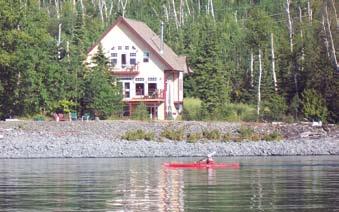

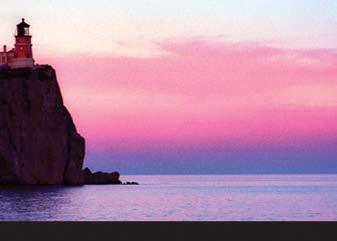


Enjoy a day in the Boundary Waters Canoe Area Wilderness. Paddle the “Kelso Loop”three beautiful wilderness lakes in three hours. Lightweight canoe rental, maps, permits, and instruction available. (218) 663-7150 www.sawbill.com info@sawbill.com


Challenge your ability with the Sawtooth Mountain Bike Race, offering beginner, sport, and expert levels, with distances from 8 to 24 miles. Begin the race in downtown Grand Marais near Artist’s Point and wind your way up Pincushion Mountain using snowmobile and ski trails. Enjoy the scenic view of Lake Superior while conquering rugged terrain. The race begins at 10 a.m. in front of Superior North Outdoor Center. For more info, visit www.sawtoothchallenge.org.
Compete in the 17th annual Northshore Inline Skating Marathon in Duluth on Saturday Sept.15 at 9:30 a.m. Follow the same scenic route followed by Grandma’s Marathon runners for the past 30 years, while in the company of more than 3,000 other skaters. This is the largest inline marathon in North America and offers different categories of races. Visit www.northshoreinline.com for more info.


Roy Thomas, a renowned Ahnisnabae self-taught artist who lived in Thunder Bay, is still recognized for his distinctive high quality work of more than 30 years. Guided by stories from his grandparents, Thomas became a painter in the Ojibwe Woodland-style at a young age. His work uses symbolism and images inspired by pictographs he saw as a child. He also gathered inspiration from the teachings from his people.
His memory now carries on through his paintings with the help of his wife Louise Thomas, owner and operator of the Ahnisnabae Art Gallery in Thunder Bay. An exhibit of his work at the Thunder Bay Art Gallery will be open until Sept. 9 and is free for members and children under 12. Admission-free Wednesdays also apply. Regular cost is $5 adults and $2.50 for students and seniors. For more info, visit www.ahnisnabae-art.com.


By Javier Serna
Autumn is an awesome time to visit the Northern Wilds, when fall foliage paints a beautiful backdrop to every setting. The color season on the North Shore comes in phases, typically starting in the middle of September and sometimes stretching to the end of October.
Once the fall color season starts, the Superior National Forest will have regular updates. Go to: www.fs.usda.gov/superior
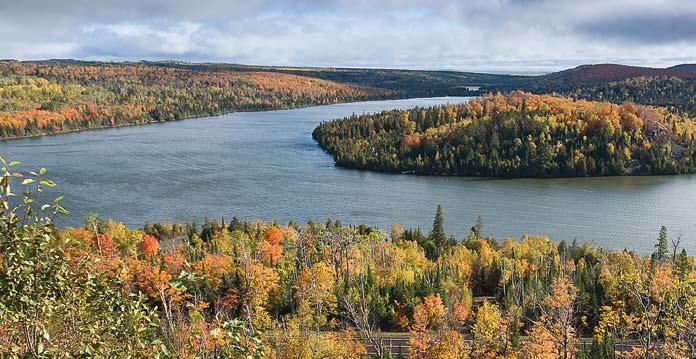
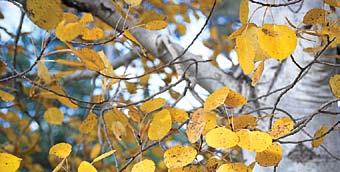

The fall color season is extended by climatic differences near Lake Superior and inland, as well as differences among tree species. It helps to know where to look and what to look for, so we talked with Ginny Storlie, an information specialist at the Tofte Ranger Station in Superior National Forest. She gave us the rundown of those color phases.
Inland aspen and birch. Up over the ridge and into canoe country, the aspens and birch trees generally start turning color at the end of September, and contrast against the spruce and other conifers that stay green. The colors can last into the second week of October. Both aspen and birch turn a bright golden yellow.

North Shore color. Lake Superior moderates the climate, delaying the first frosts and the changing color. Look for the color to begin around the end of September, but to last through much of October. The first to usually pop is the moose maple, a shorter tree with bright red leaves. Storlie mentioned mountain ash, which is common near the lake. The color of the foliage is accented by brilliant red-orange berry clusters.
Sugar maples on the ridges. The North Shore’s star attraction can start up in the middle of September, but the peak is usually the last week in September or first week in October. “They are the first to pop” she added. Look for maples along the ridges within three or four miles of Lake Superior.

Tamaracks. These deciduous conifers are the last to turn and that can happen from the second week in October through the end of the month. They’re typically found inland, often near bogs and low-lying areas. The needles turn yellow, and like changing leaves, the needles of a single tree don’t all turn at the same time, with some needles hanging on to their chlorophyll longer than others.
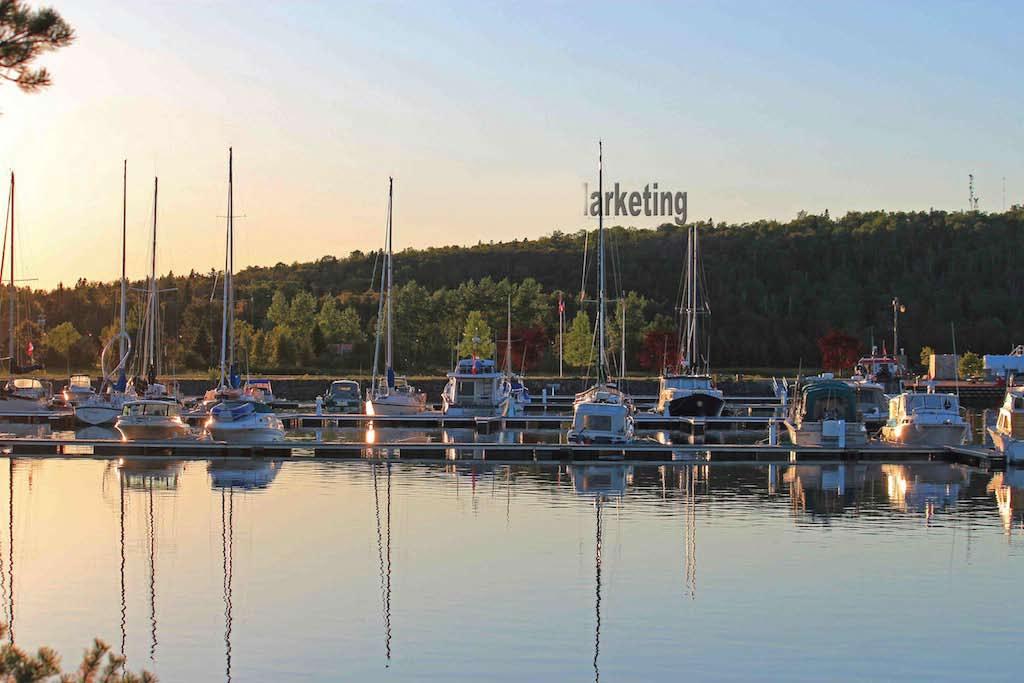


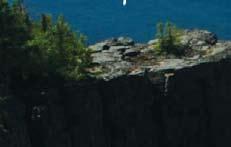


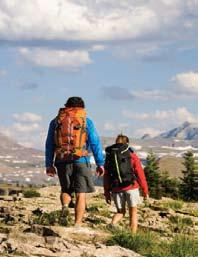














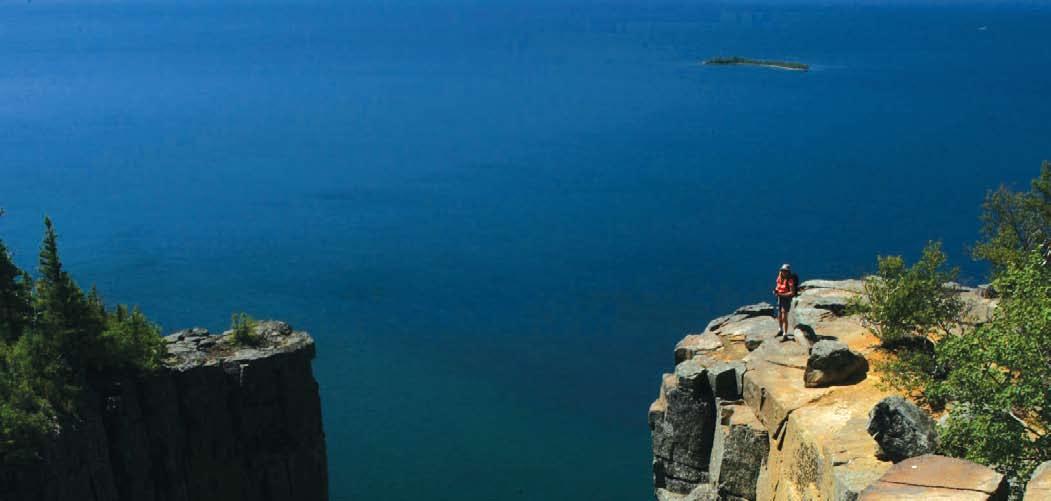
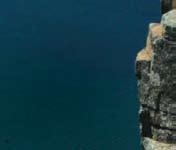
In June, Northern Wilds toured Thunder Bay and the Ontario North Shore. Due to changing economic conditions, the region is redefining itself with a new emphasis on Lake Superior and outdoor recreation. We were struck with the beauty of the place, the wealth of things to do, and the friendliness and vibrant energy of the people. Here’s a sampler of what we experienced on our four-day adventure. You’ll be reading more about Thunder Bay and beyond in future issues of Northern Wilds.
—Shawn Perich
Photos by Shawn Perich, Kate Watson and Jim Boyd
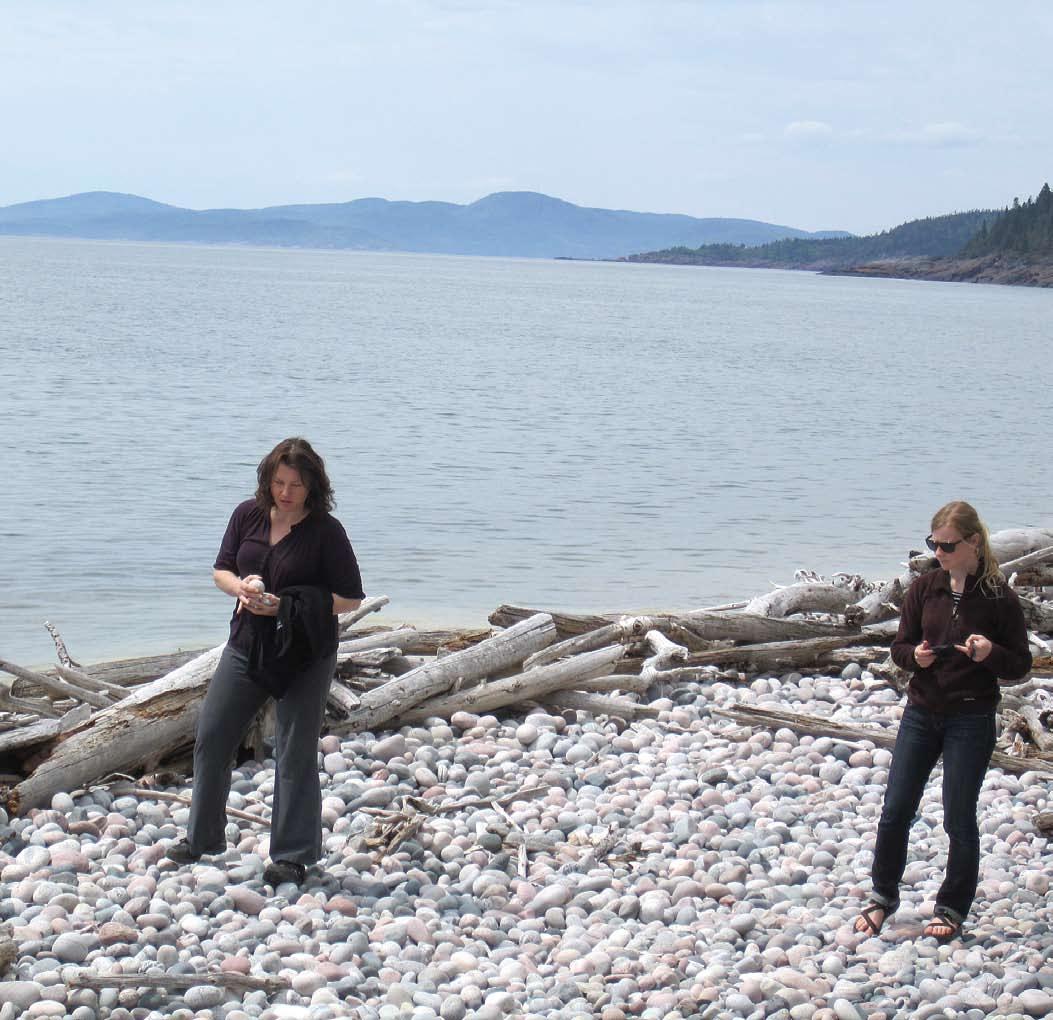
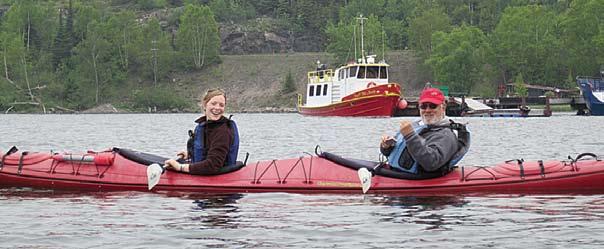
Numerous islands near the sleepy village of Rossport create a superb setting for sea kayaking in scenic, sheltered waters. Whether you are day-tripping or exploring the Lake Superior National Marine Conservation Area, Rossport is the perfect port-of-call. If you need gear or good advice, contact Superior Outfitters—www.superioroutfitters.on.ca.
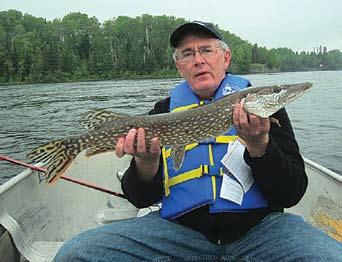
Famed worldwide for its giant brook trout, the Nipigon River offers exceptional opportunities to catch trophy-sized brook trout, as well as lakers, salmon, steelhead and pike. First-timers are well advised to use the services of a guide, because the river is best fished from a boat. Quebec Lodge in Red Rock caters to anglers —www.NipigonRiverAdventures.com.
Located in the town of Marathon, Pebble Beach seems like it is a world away. The unspoiled shoreline is a rock-picker’s delight with stones of every hue. Tumbled driftwood along the beach recalls an earlier era of river drives and rafts of pulpwood which tugboats towed to mills. Follow signs through town to Pebble Beach. Parking is available, but there are no amenities.
Native Art and Language

We invite you to visit us in the gallery or browse through our online shop.
7-1500 James St. S., Mount McKay Place, Thunder Bay, Ontario CANADA www.ahnisnabae-art.com 1-807-577-2656 • Hours: Tues-Fri 11 am - 7 pm • Sat Noon - 4 pm
Sail aWay
The ongoing transformation of Thunder Bay’s waterfront is nothing short of amazing. The new Prince Arthur’s Landing project includes the city’s marina, which is within easy walking distance of downtown. From the marina you can set sail and see the city from another perspective. Day excursions and extended charters are available through Sail Superior— www.SailSuperior.com.
Kakabeka Falls, ONT









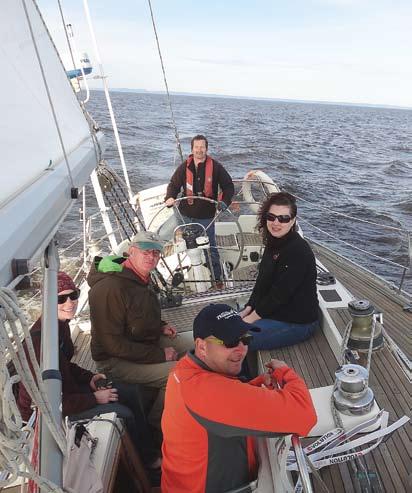



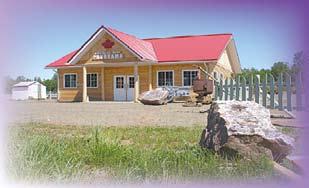



A short walkway from the parking area leads to a series of waterfalls on the White Sand River at Rainbow Falls Provincial Park east of Rossport. The walkway is suitable for all ages, but is not wheelchair accessible. The park has a swimming beach on a warm inland lake and offers camping near the lake and along Lake Superior.


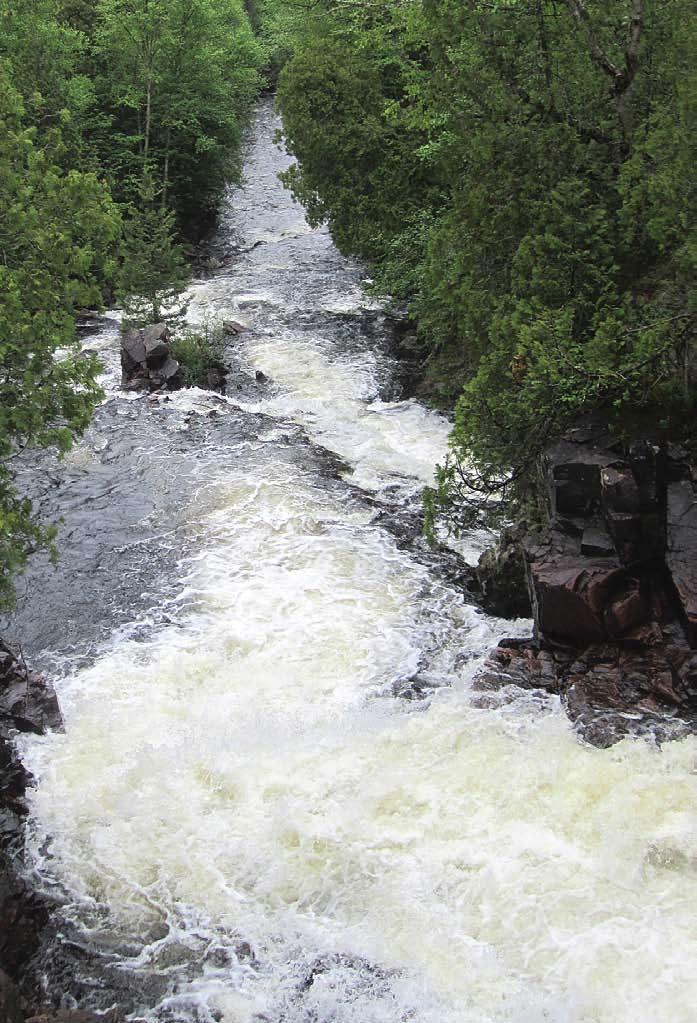
bring the KidS
The book, “Paddle to the Sea,” has inspired generations of children to look to the wide world beyond their backyard. The story originates at the Nipigon River, which is why the town chose to build the children’s theme park. The park is located in downtown Nipigon
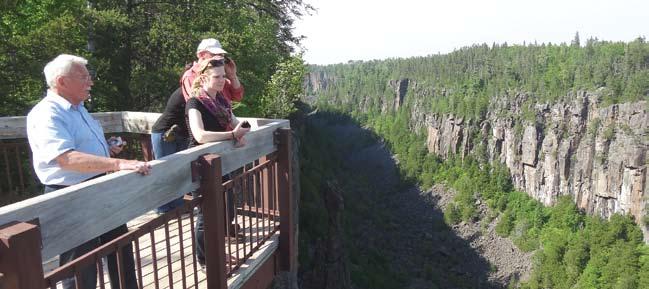
A five-minute walk from the parking area leads to a platform overlooking a canyon nearly as deep as it is wide. Ouimet Canyon is among the greatest of the North Shore’s many natural wonders.
Two hundred years ago, a trading post at the mouth of the Kaminisitiqua River was a vital hub for the fur trade. Fort William Historical Park , located upriver from the original site, vividly recreates the fur trade era with living history reenactments www.fwhp.ca.

Take a kid or a senior fishing at Eagle Ridge Trout Ponds, which are stocked with rainbow trout and smallmouth bass. The ponds provide a safe, accessible environment for those who may not have other opportunities to go fishing. Two cabins, a campground and an outdoor swimming pool compliment the facility— www.ertp.ca.






By Breana Roy
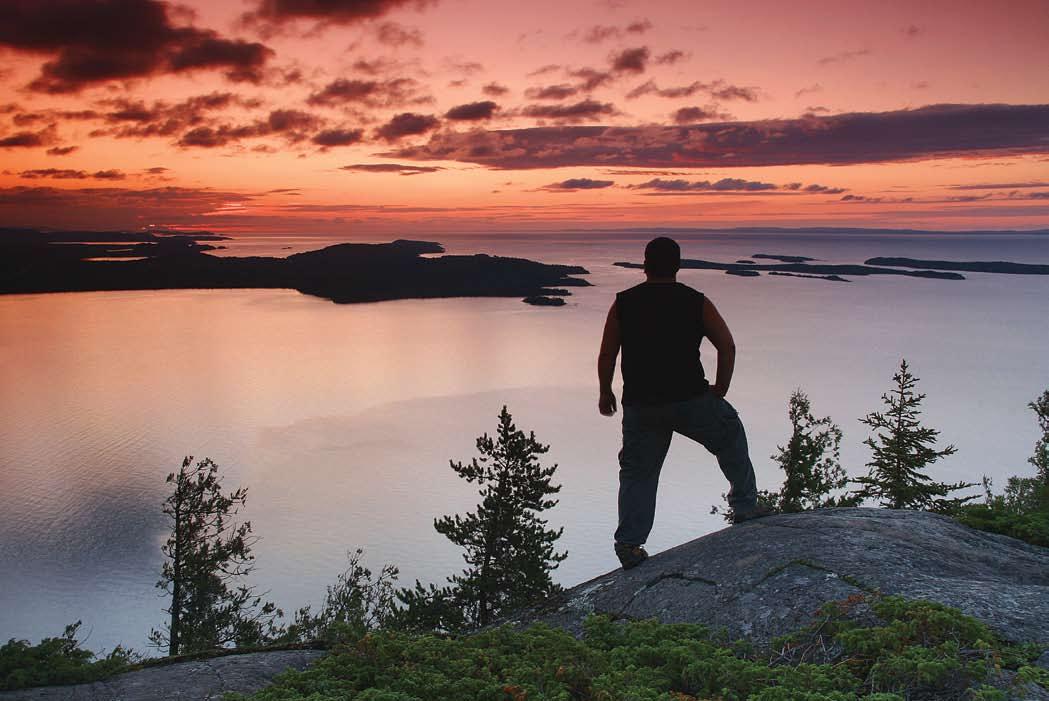
Hikeyour way to the top of one of the many summits in the Northwoods for an adventure this summer or fall. There are many hikes to choose from for all levels of difficulty, from an easy and quick afternoon hike to a demanding day trek. Regardless of your preference, each hike is sure to impress, providing a spectacular view of the surrounding area. Be prepared and wear comfortable hiking shoes and clothes. Also, take along a backpack full of supplies, if necessary. Items to keep in mind include a first aid kit, sunscreen and/or bug repellant, food, water, toilet paper, a map, a compass or GPS, and zip-lock bags.
This short half-mile hike is perfect for watching the sunset and is fairly easy to complete. The hike can be found by heading about 22 miles up the Gunflint Trail and then turning east on Clearwater Road past Flour Lake Campground.
Test your endurance with a grueling 13mile hike to the top of the “giant” located in Sleeping Giant Provincial Park in Thunder Bay. To find this awe-inspiring hike, head to the Kabeyun Trail parking area just before Silver Islet. Start out along the Kabeyun Trail to Tee Harbor. Then head toward Lehtinen’s Bay and turn onto the Talus Lake Trail to find the beginning of the Top of the Giant Trail. While diffi-
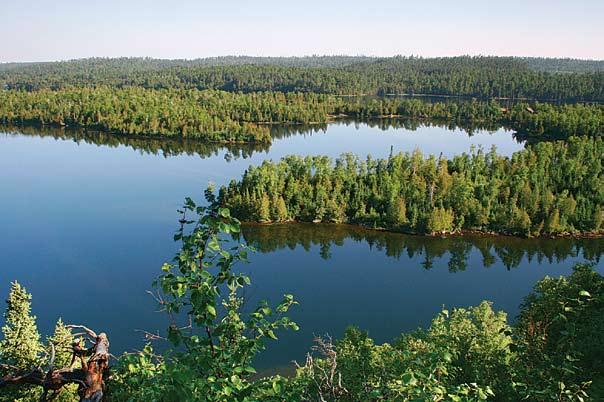
cult, the end result gives a spectacular view of Lake Superior. You can also see the entire length of Isle Royale.
Located in Grand Portage, this easy hike provides a spectacular view of Lake Superior and the Susie Islands with Isle Royale visible in the distance. This short
1.5 mile hike provides a picnic table area and restroom facilities, making it the perfect spot to bring a lunch and relax.
Eagle Mountain is the highest peak in Minnesota at 2,301 feet above sea level and is located within the Boundary Waters Canoe Area Wilderness. The lengthy hike of about seven miles round trip is well worth the trek. On a nice day, you can see Shrike, Eagle, Zoo, and Crow lakes to the west, Lake Superior to the south, Misquah Hills to the north, and the Brule lookout tower on Brule Lake to the northwest. However, a BWCA permit is required for this hike. Free, selfissuing day permits can be found in the parking lot and overnight permits can be found at a Forest Service Ranger Station. This hike provides lots of rocks and rough terrain, so make sure to wear thick-soled shoes or boots.

This unique hike consists of volcanic rock and rises about 924 feet above Lake Superior; It’s 1,526 feet above sea level. Carlton Peak is part of the Superior Hiking Trail and is located about two miles up the Sawbill Trail in Tofte. To find the trail, walk across the Sawbill Trail and follow the snowmobile trail. This is a moderate hike of 3.4 miles round-trip to the peak or 5.2 miles round-trip to the overlook. The final, sweeping view includes Lake Superior, Tofte, the Temperance River valley, and west past Taconite Harbor.
A short walk from the parking lot at Duluth’s Enger Park leads to this five-story tower made from Minnesota blue stone. The tower, atop Enger Hill, is at an elevation of 451 feet above Lake Superior, offering a spectacular view of Duluth Harbor, St. Louis Bay and the Twin Ports. The tower has numerous lookouts as you climb the staircase, giving a variety of vantage points. Crown Prince Olav of Norway dedicated the tower in 1939. It memorializes Bert Enger, a Norwegian immigrant, who sold furniture and donated the land for the park.
By Eric Chandler
“This is the last bike we’re buying you,” we said to my 11-year old son. He’s bigger than my wife now and has the same size feet as me. His “29er” mountain bike is dangerously close to being nicer than mine. I suddenly realized we’d reached the end of the evolution of family bicycles. Let’s see if I learned anything.
Bicycling is a gear-intensive sport. Multiple kids mean lots of bikes. Buying new gear can be intimidating and expensive. Work with your local bike shop, and they will alleviate your fear. A key part of cycling is recycling. First of all, several of your local bike shops or clubs may sponsor an annual bike swap where you can find pre-owned bikes for a reasonable price. Whether you buy new or used, another way to recycle is to have hand-me-down bikes within your own family. Unless you have twins, you don’t need more than one bike at a time that’s the same size. Kind of like your kids, they can be spread out in size, from younger to older. Our crew went from a tricycle, to a bicycle trailer, to a tagalong, to a small bike with training wheels and coaster brakes, and, finally, to moun-
tain bikes with gears and hand brakes. The tag-along (a child “bike” that is attached to the seat-post of an adult’s bike) was surprisingly useful and allowed family outings when our daughter was still too young to keep up on her own.
I’d add one missing item to our evolutionary chart. I’d get a balance bike. It’s a cycle with no training wheels and no pedals. They’d learn how to balance a twowheeler and cruise along with “Flintstone” power. When you add pedaling later, maybe they won’t need training wheels.
One thing we always bought new was the helmet. Make sure they always wear it and make sure you do, too. I used to race bikes and I’ve seen too many lives saved by helmets to let this slide.
How do you know when a kid needs to move up to a new bike? My son recently said, “I feel like a dork with my knees hitting my chin.” It’s pretty self-evident. When you move up a bike size, don’t go too big hoping the child will grow into it. A bike that’s too big may be worse than one that’s too small. You don’t want children flying into a ditch because they can’t control their oversized machine.
Should you buy a road bike or a mountain
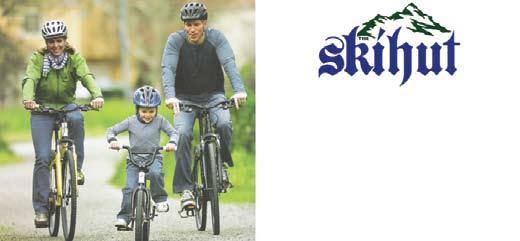





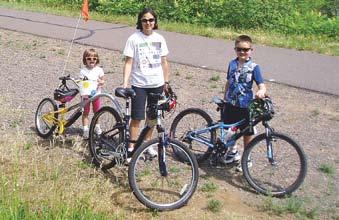
bike? Versatility is more important than specialization. They can ride a mountain bike anywhere. A road bike is a one-trick pony. From a safety standpoint, I’d rather have my kid on singletrack than on the road tangling with traffic.
My parting advice is to let the kid “take the lead.” Let them keep training wheels until they want to be set free. They should also make some trail choices.
I pick trails that are easier than they can handle. Let them tell you they want something tougher. I’ve tried to force the issue by taking training wheels off and picking a tough trail. Learn from my mistakes. Relax and be patient. The last time I checked, there's no prize for getting rid of training wheels first. Keep it calm and happy. That’s the point, after all. Have fun with your kids on bikes in the Northern Wilds.




















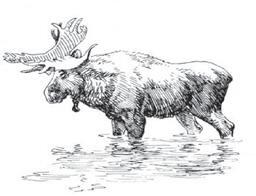


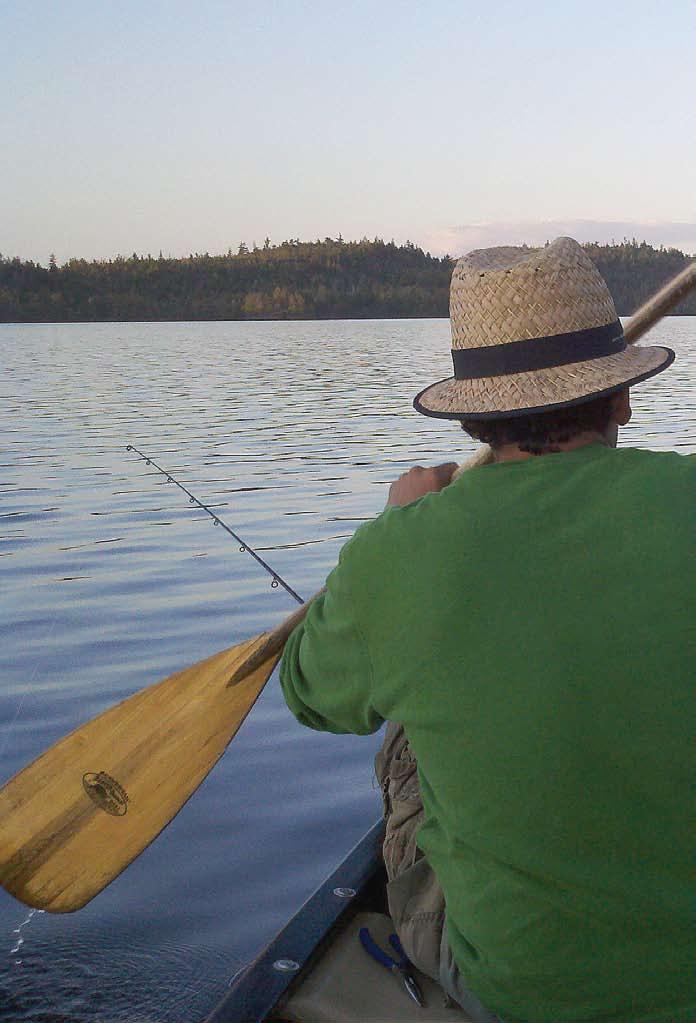
September can’t get here fast enough for me.
It was a little more than a year ago that I moved from Raleigh, N.C. I was motivated in part by a desire to flee the relentless heat and humidity. It also didn’t hurt that I would be able to flip my Boundary Waters fix from once every few years to a few times every year at a minimum.
But even with the cold-winter reputation of Minnesota, it can still get awful hot here for a few months in the summer. So I gladly welcome September, when canoe country cools down. But there are other reasons that make it a great month to head into the Boundary Waters. I spoke with Dan Baumann about September on the Gunflint Trail. He and his wife Teresa own and operate Golden Eagle Lodge on Flour Lake.
“Right after Labor Day, it quiets down a lot,” said Baumann.
With kids returning to the classroom, there are fewer people in canoe country. There are also fewer bugs.
“They’re next to nil,” Baumann said.
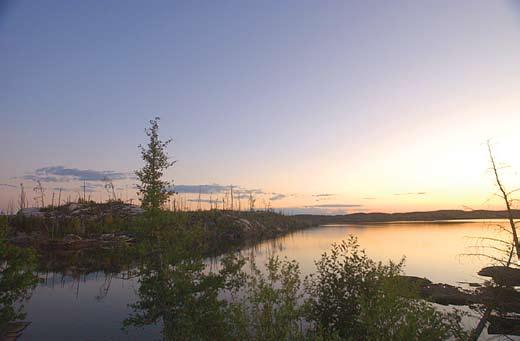
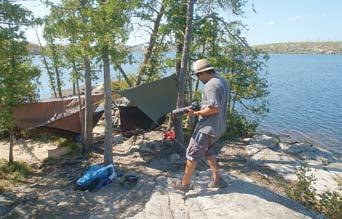
And while the bugs and people seem to be gone, leaving the place to the few, fall colors arrive and begin to pop on the leaves. If there’s a downside, it is that the days start getting a little shorter and September weather can be hard to predict, even if the average highs drop off from the warmer days of August.
“There’s a lot of different weather patterns,” Baumann said. “You can have rain, sun and clouds all on the same day.”
That can make for tough fishing at times.
“All that disrupts fishing patterns,” Baumann said. “The fishing generally goes down a little bit. But in the fall, you get quality over quantity. Fishing is still good. You can have a lot of good days with it.”
Indeed, my trip out of Seagull Lake last September was not memorable for the fishing, though we did land a few decent fish. We had a few warm days mixed in with a few cooler days that were still painted with beautiful, brilliantly blue skies. The weather was incredible, and we watched some memorable sunsets that week. That type of weather is not guaranteed,





something I learned on my first canoecountry trip, which was nine years ago this September.
I jumped at a last minute invitation for a trip embarking on the Gunflint Trail. We were pelted with hail, and drenched with rain, until we were so soaked that we came out a day early.
That didn’t stop me from falling in love with the place.
I usually don’t mind rain while camping. We probably wouldn’t have cut out early if our gear hadn’t been saturated. That gets at my best advice for September canoe tripping. Be prepared for any type of weather. And keep it dry. Try to avoid traveling during heavy rain.
That first September trip was unforgettable. In between the bouts of rain, there were blue skies, more loons than I’d ever encountered, and even the northern lights made an appearance one night.
That left an impression, one that helped guide me back to the North Country.
And now I just can’t stay away from the Boundary Waters in September.

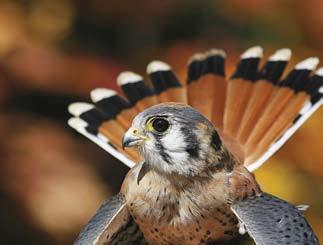

What migrates through the Northern Wilds each September, wears a moustache, is blue and orange in color, and has dragonfly goo on its face?
The beautiful American Kestrel.
Standing on a barren rock ridge high above Lake Superior one September a decade or so ago, I was amazed to see huge numbers of Green Darner dragonflies sailing down the shoreline toward Duluth. These large dragonflies do indeed migrate long distances – a oneway trip for them. However, their offspring, hatched in the south, will make the return journey north.

BY MiCHAEL FuRTMAN

And while dragonflies themselves are fierce predators, the Green Darners I watched were being preyed upon by the American Kestrel. The folks at Hawk Ridge Bird Observatory in Duluth have long noted that the peak of the kestrel migration coincides with the peak of the dragonfly migration, a fact I was unaware of that day in September.
But I might have guessed it after an hour or so of watching these beautiful falcons. While attempting to photograph kestrels on the wing as they sailed at near eye-level down the ridge, I was stunned to see these small swift falcons suddenly veer or dive, only to snatch up one of these huge dragonflies. Although I was surprised enough to see this, I was shocked to note that the kestrels were also eating the insects while continuing their migration. With the dragonfly in their talons, lengthwise the way an osprey or eagle carries a large fish, the kestrels bowed their heads, reached down and ate the insects while soaring along.
That they do this in flight is also confirmed by the researchers at Hawk Ridge, who lure these falcons in so that they can be caught, banded, measured and released. They have found that many kestrels have dragonfly goo all over their beaks and face. After eating, birds normally wipe their bills on a branch or other solid object to clean them, a process known as “feaking.” Some use their feet to wipe their cheeks. But eating on the wing means the kestrel can do neither.
There are a few other interesting facts about this, our smallest diurnal (daytime hunter) bird of prey. First, they are the only diurnal raptor that is a cavity nester, nesting in holes excavated in trees by woodpeckers. Because of this trait, this falcon readily adapts to nest boxes similar to those put out for wood ducks. Second, they are one of the few raptors to display plumage differences between males and females. Only the males have blue heads and wings, although both sexes share the same lovely rusty orange on backs and tails, though the male’s tends to be more vivid. And both share the distinctive falcon “moustache” on the sides of their pale faces. Finally, few other raptors depend as much upon insects for food as kestrels, although they also catch and eat small birds, rodents, and reptiles.
Hawk Ridge has counted nearly 4,000 of these beautiful little falcons in a single year, and obviously, they don’t see them all. I suggest that if you would like to see and photograph kestrels, that you pick a warm day with westerly breezes any time in September, and perch yourself on an open ridge just inland from the big lake. Like other migrating raptors, kestrels avoid Lake Superior, so funnel
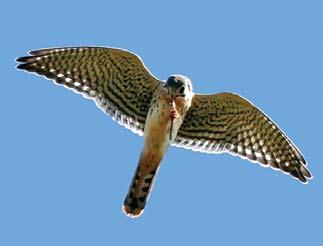
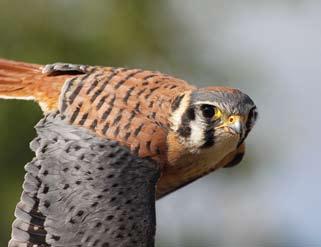
[TOP RIGHT ] Juvenile male kestrel. [M IDDLE ] Eating a dragonfly in flight. B OTTOM ] Kestrel in flight.
south riding updrafts that rise from the shoreline bluffs. I’ve found the best time to be mid-morning when kestrels tend to fly not far above the shrubs or trees, hunting Green Darners and small birds.
Keep your eyes open and camera ready! Like all falcons, American Kestrels are swift. But if you do catch a glimpse, you won’t soon forget this bird’s beauty – even if its face is covered in dragonfly goo.
BY GORD ELLiS


Summer in northwestern Ontario is sweet but remarkably short. By the time August is half way through, the mornings get sharper and the skies a deeper blue. Even the birch leaves take on a more yellow hue. Yet the end of the summer means fall, and autumn is one of the very nicest times of the year to be outdoors in northwestern Ontario.
There is one annual event that helps many anglers get out and celebrate the beginning of fall. The event is one people from across Ontario and Minnesota have enjoyed for several decades. This year’s Nipigon Fall Fishing Festival in beautiful Nipigon, will be held from Aug. 31 to Sept. 3.
This historic event was started in the mid 1960s by the Nipigon Legion and was always imagined as a family-friendly event. That hasn’t changed, although the event continues to see the number of activities grow. It is also the longest continuously running event of its kind along the north shore of Lake Superior.
As a kid, I remember the fall derby was focused on catching the legendary speckled trout of the Nipigon River. In the 1980s, due to concerns about conservation, the event moved away from brook trout and began to focus on Chinook salmon. The Nipigon River has one of the very best salmon fisheries on the Canadian side of Lake Superior, and big Chinook start rolling into the river as early as July. By the end of August, salmon are everywhere in the river, and there are some tackle busters. It can make for a great fishing experience. One memorable afternoon at the derby happened a few years back on the last day of the event. There were only a couple of hours to go, and we had yet to catch a fish. My partner and I began trolling a deep hole with No. 9 silver Shad Raps. As we dropped the boat back towards the lip of the pool, something grabbed my lure and started running. There was a set of rapids below the pool and so off we went chasing

this great salmon through the waves. It was a fight I’ll never forget. The big Chinook used the impressive current in the river to peel nearly all my line off. After about 10 minutes, I regained the line back and the big fish tired. It finally surfaced, flashed a wide silver side and was netted. Our jaws dropped. At the weigh-in scales, the salmon pulled the pin to 19 pounds. We had top spot at the derby for a while, until some guy came in with a 23-pounder and knocked us off the pedestal. There are still big salmon to be had, although the average Nipigon fish is between 8 and 11 pounds. Needless to say, fishing derbies remain the core of the Fishing Festival and there are three to enjoy. On Saturday, there is a one-day competitive salmon derby, while Sunday features a Huck Finn derby. The Family Derby runs all weekend long. The competitive salmon derby is the
marquee event and is limited to 150 fisherman or 75 boats. This is a largest-fishwins event, so whoever can land the fattest Nipigon Chinook takes the top prize. The prizes are $3,000 for the largest salmon, $2,000 for second and $1,000 for third. There are also a number of mystery weight prizes.
Tickets for the salmon derby must be purchased by the end of the business day on Friday. The weigh-in takes place between 4 p.m. and 7 p.m. at the Curling Club on Saturday. The weigh-in limit is one entry per competitive salmon derby ticket. Prizes are awarded Saturday evening.
Taking part in the family derby will cost $20. Fishing takes place from Saturday to Monday with a weigh-in limit of one fish per category/ticket a day and a maximum of two fish tickets a day. Ticket catego -
ries are pike/walleye and lake and rainbow trout/salmon. Prizes for the family derby are awarded by luck of the draw and are presented at the arena on Monday night. Sunday’s Huck Finn is open to any child 12 and under for a $3 entry, payable upon entering a fish. There is one entry per child allowed. Weigh-in is at the curling club on Sunday afternoon. The Huck Finn is open to all species, but only the largest perch entered wins the annual trophy plaque and bragging rights. If you just want to relax or party, you can grab something to eat at several locations. The www.fallfishingfestival. ca website provides a listing of all events during the festival. You can also call 877-596-1359 for more information. The Nipigon Fall fishing Festival is a great event. Check it out this autumn and learn why fall isn’t long enough.

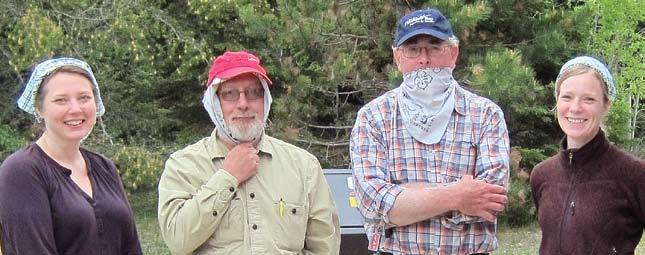
Gunflint Trail
789 Trout Lake Road Grand Marais, MN 55604 (218) 387-1330 (800) 258-7688
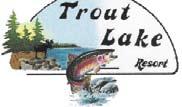
www.troutlakeresort.com email: troutlake@boreal.org







On a recent trip to Ontario during the height of the mosquito season, four of us agreed Insect Shield kept the bugs at bay. Treated with Permethrin, a natural insect repellant, Insect Shield's wide array of garments repel ticks, mosquitos and flies. The treatment lasts through 70 launderings and is safe for all ages to wear. Be aware that you should use a traditional insect repellant to protect areas of exposed skin.—Amber Pratt
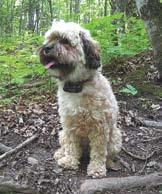
Though perhaps not for everyone (or every dog), an electronic collar can be a useful training tool. The Sportdog Yardtrainer waterproof collar is controlled by a remote with a generous 100-yard range. It includes eight intensity settings and buttons for the shock and a warning beep. The shock delivered by the collar feels like a static shock (yes, I tried it on myself), and the experience should NOT be a painful sensation for the dog. The accompanying training booklet says it should serve as an attention-getting tool like a tug on the leash. With some work, our stubborn puppy responds faithfully to the warning beep, no shock required. More information at www. sportdog.com. MSRP $119.95 – Kate Watson
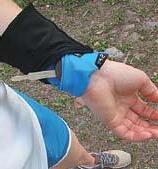
That little pocket in the waistband of my running shorts has never been very convenient. Not only does a stashed house key create an awkward weight, but I always feel a little shady digging in my shorts postrun before hopping my car. Well, file this one in simple solutions that work: slide a soft, stretchy Spiband on your wrist or ankle and securely store a key, credit card or other small item during your workout. No more poking key, no more awkward digging. www.spibelt.com MSRP $9.95-11.95 – Kate Watson

The two biggest differences between the Italian-made Lizard Kross shoes and a typical shoe are the thin soles and close-fitting, flexible body. Both attributes are meant to emulate the feeling (and benefits) of being barefoot while offering the protection of a shoe. While the term “barefoot shoes” may seem like an oxymoron, in fact it is a perfect encapsulation of Lizard’s minimalist design philosophy. The ultra-light Krosses hugged my feet— aided by the drawstring lacing system, which looks elaborate but is adjusted with a couple of tugs—and protected my skin while still allowing me nearly the sensitivity of bare feet. Comfortable, trendy and functional. Both men’s and women’s styles available. MSRP $89 —Shelby Gonzalez
Light, loose and comfortable describes the Wrangler Angler Pants. Designed to wear on the water, the Angler Pants have features like extra tool pockets, a kill switch loop and secure velcro closures on the back pockets. With a relaxed fit, elastic waist and double pleats, some may find the pants built more for comfort than style, which is just fine with many anglers. The pants are available in 6.5-ounce ripstop cotton, great for hot summer days, and 100 percent denim. About $35 at www.wrangler.com.
—Shawn Perich
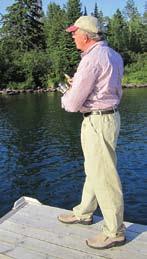
By Shawn Perich
Around our house, we don’t eat a lot of chicken during September and October. Instead we have fresh ruffed grouse as often as we can. After all, why settle for chicken when you can have the best? The delicate flavor of ruffed grouse arguably surpasses any other fowl.
The grouse hunting season begins in mid-September and remains open through the end of the year. However, nearly all hunting occurs before the snow flies. Aside from a shotgun, you don’t need special skills or gear to go after grouse, which is why generations of youngsters were introduced to hunting in the grouse woods.

Ruffed grouse look like small, wild chickens. You’ll see them along backroads or when out for a hike. While they may startle you by flushing with a thunder of wings, often grouse just walk away through the underbrush. Because they are not wary around people, many grouse are shot along the edge of forest roads. Sophisticated grouse hunters only shoot birds on the fly. How you decide to shoot them is up to you.
The best way to find grouse to amble along old logging roads. Rarely will you walk more than a mile without encountering a bird or two. You can find grouse just about anywhere in the forest, though they are less common in maple woods and red pine plantations. Grouse are closely associated with aspen trees, which provide food and cover.
Grouse abundance rises and falls in a 10year population cycle. Biologists predict the population is trending downward this year. Don’t worry about it. Even a beginner should find enough birds to have a successful hunt. The grouse meal you make afterward is worth the effort.

The easiest way to clean a grouse is place it breast-up on the ground, step on each wing near the body, then grab the feet and pull upward. The legs, back, skin and entrails will pull away, leaving a clean grouse breast with the wings attached. Just use shears or a knife to cut off the wings. The breast contains nearly all of the bird’s edible meat, with a minimal amount on the thighs and legs. We generally prepare the breast and save the thighs and legs for stock.
You can eat grouse fresh or freeze it. We vacuum seal and freeze whole breasts. Prior to cooking, I like to filet the meat off the breast bone, the same as you would with a chicken, and have two boneless cuts. One breast filet is enough for a single serving, though many folks so enjoy the flavor of grouse that a whole breast isn’t too much.
Grouse is very lean white meat with a delicate flavor. You can use it in just about any chicken recipe, but take care not to overcook. Very often, we just dust the breasts in flour and bake. This way we enjoy the full flavor of the birds.


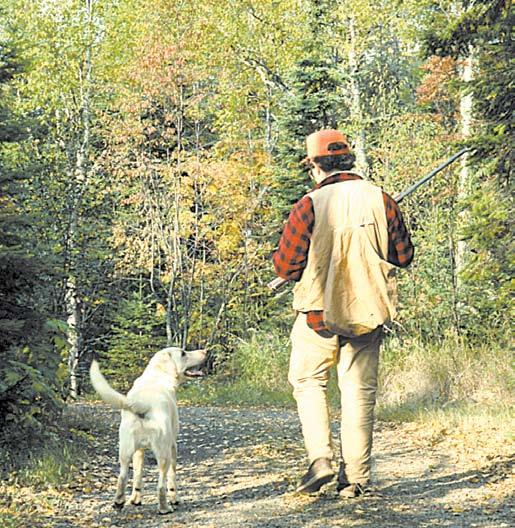





high tech machines faster, better handling, more reliable than ever –and people friendly
By Lee Boyt
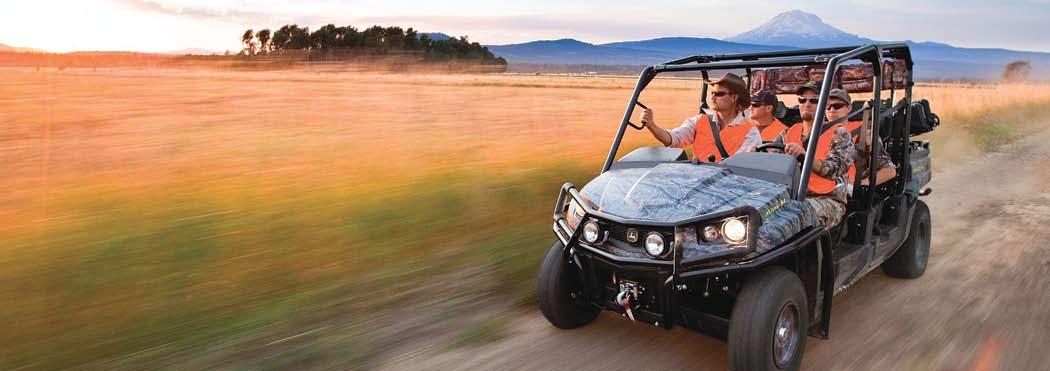
The world of ATVs is a dynamic industry, nearly always in a state of flux as the manufacturers snatch up new technology (or create the techy stuff in-house) before the competition; releasing cutting-edge machines for existing markets; or seeking out untapped uses for the versatility of a “portable” off-road piece of equipment.
What follows is a small sampling of the cool stuff you’ll find in your local powersports dealer’s showroom, not a definitive buyer’s guide or reference tool. Space constraints precluded us from waxing poetic about each model in every ATV manufacturer’s product line.
The most notable trends in non-motorcycle off-road vehicles often incorporate significant technological innovations, enhancing creature comforts via in-depth evaluations of the relationship between a machine’s ergonomics and the human anatomy.

Strangely enough, the dimensions, seat shapes and angles, handle and control placement (and dozens of other details) specified by the computer’s design software didn’t jibe with what the companies
were hearing from their customers.
So, it was out of the cubicles and into the woods for engineers and design teams, to run their creations until the pain convinced them to seriously consider revamping existing machines or design new off-road vehicles to incorporate common sense comfort into the final product.
For example, the Honda Big Red

(Side by Side/SxS) sports a plus size contoured bench seat, an Occupant Protection Structure (roll cage), side nets, seatbelts, and doublelatching side doors.
Can-Am’s Outlander Max 1000 Limited has a longer wheelbase to place the passenger forward of the rear axle for a smoother ride. The seat has more cushioning and the shape is in tune with the rider’s body; the backrest flexes a little, is higher and wraps around the sides a bit for more lumbar support. Handholds and footrests are also new, making the two-up experience even that much more pleasurable Power steering
folks originally doubted its benefits; however, customers quickly came to appreciate EPS in helping reduce overall rider fatigue – especially over long and more technical rides, and when using the machine extensively on remote jobsites.
You’ll find EPS on most of Yamaha’s off-road vehicles, including their SxS models .

by-Sides (SxS) are gaining popularity because of their incredible versatility, good looks, and superior ride quality.
Other manufacturers offer power steering as well, because one can safely harness higher horsepower at greater speeds and under less-than-ideal conditions than a machine with manual (non-power) steering.

Consumers are demanding machines with more power to haul heavier loads, to navigate unforgiving terrain, and to go faster.
The mid-high end machines for 2013 all offer finely tuned powerplants, four wheel drive powertrains with varying degrees of traction control and gear selection, automatic transmissions, independent (often adjustable) four-wheel independent suspension systems, in addition to top-shelf disc brake systems.
side-by-side vehicles (sxs)
Your SxS can be a workhorse during the week and an escape vehicle on the weekends – and unlike a two-seater ATV, you can get a four passenger SxS to share the fun with family and friends. The really cool part of the four seat SxS is the back seats fold down into the bed when you don’t need them.
The SxS market runs the gamut from basic farm/jobsite machines, hunting group haulers, and campers/adventurers.

The U.S. Armed Forces use variations of the SxS in combat areas to deliver supplies and evacuate the wounded. In fact, remote control SxS vehicles can conduct surveillance and neutralize roadside explosives, without endangering lives.
The bottom line is off-road machines are the best they’ve ever been, with machines for whatever wilderness activity tickles your fancy.
Yamaha introduced the world’s first ATV Electric Power Steering (EPS) on the 2007 Grizzly 700 EPS. Initially, many
These off-roaders have more in common with small pickup trucks than with traditional tandem seat ATVs, but Side-
The most formidable and famous religious personage in Ely was Father Frank Mehelcic, the first, and in my boyhood the only priest of St. Anthony’s Catholic Church.
To Ely he was known as Father Mike. Many people had a difficult time saying the name Mehelcic, so people like my Norwegian grandfather, who wanted to show respect to him, found an easy way to compromise; Father Frank Mehelcic became Father Mike.
a touch of senility who wanted to go home. He changed the subject.


The strange thing that ended up happening was that no Catholic actually called him Father Mike to his face, with the exception of one slip at a church bingo, at which I was in attendance.
The only other time I ever heard anyone call him Mike was the day he visited my grandfather at the hospital.
Grandpa was failing mentally, “He’s a little senile,” is how mother put it.
I was visiting one afternoon when there was a knock on the door, and in walked Father Frank Mehelcic.
I offered him my chair and moved over to the chair on the far side of the room and listened.
Father Mike began the conversation; “How are you feeling Steve?” My grandfather’s re sponse shocked me.
“Mike,” he said with a sense of real desperation. “You’ve got to get me out of here.”
walking around are nurses.”
“That’s what they want you to think Mike, but I spent a lot of time in the kitchen out at Daisy’s, one of the local houses, and I might not know a lot of things, but by god, I know a sporting house when I see one. I thought my family loved and cared about me, but all they want is my money. Man gets a little sick, so they get him a cheap bed in a bordello so they can spend more of my money after I’m up at [the cemetery] feeding the worms.”
Father Mike was laughing so hard he had to look away in order to collect himself. There were tears of laughter in his eyes, and he wiped his eyes.
“That’s right Father, weep for shame.” Grandpa sensed a sympathetic ear: “An honest man works hard all his life, and where does he end up, in some two-bit whore house with some demented old man laying in the other bed moaning and groaning in the night. But do you know what the worst of it is?”

“Steve, you got the pneumonia, and there isn’t a better place for you to be than in the hospital, they got the medicine to make you feel better.”
“Hospital,” my grandfather scoffed in his best contemptuous Scandinavian English, “That’s what people want you to believe Mike, but this is nothing but a whore house.”
Father Mike and I were both taken aback.
“This is a hospital Steve, those women
Soon all thoughts of sporting houses were forgotten, and they talked about a time long ago, when a young Father Frank Mehelcic rented a crazy horse from my grandfather named Happy, and how that mean spirited horse bolted and almost killed the young priest.
It has been many years since that long-ago visit, but I still have a good laugh over the only time I ever heard any one call Father Frank Mehelcic to his face, the name history would remember him by; Father Mike. But my grandfather said it with respect and love, and this story is written just that way; with great respect and love for Father Mike.

And he sat up in bed and leaned over towards Father Mike, and Father Mike leaned down towards where Grandfather lay.
“Alright Steve,” Father Mike said in dead Slavic seriousness, “Tell me the worst of it.”
“They wear white, Father. It isn’t enough they go about all night long doing their dirty business, going from room to room like busy little bees, but while they’re doing it, they’re wearing white. A bunch of wicked and wanton women mocking every sense of decency.”
“Stop,” Father Mike said, by this time he was laughing so hard he was shaking, “I can’t hear any more. I can’t promise to stop this tonight, but I promise you, Steve, that I am going to tell the hospital board exactly what you told me about what goes on here.”
Then Father Mike did what many intelligent people would do with a person with

these areaÊoutlets:
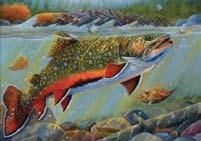






Cozy rooms tucked in the woods
Pets welcome • Sit around our campfire Across the road from Tettegouche State Park 218-226-4712 • 800-332-0531 5763 Hwy 61, Silver Bay, MN • www.WhisperingPinesMotel.com


I’ve always been attracted to green manure. You take some seeds, scatter them on the ground, cover them with soil, let them germinate and grow, then till everything back into the garden and presto! — instant fertilizer and soil conditioner.
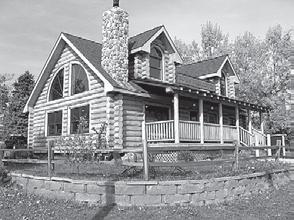
Specialty Coffee - Whole Leaf Tea - Gourmet Soups - Bakery Goods - Homemade Sandwiches
We go to incredible lengths to select the finest individual beans for your locally owned Dunn Bros Coffee Stores. Each single-origin bean reflects the unique nuances of the farm where it was grown. We take great joy in offering different varieties of coffee roasted daily in our store. We think you’ll take great joy in drinking them.
Dunn Bros Coffee 2401 London Road Duluth, MN 55812 (218) 724-8838
2 Blocks West of Blackwoods Restaurant, across from the Edgewater Hotel and Waterpark

There are lots of plants you can do this with. Many are legumes, which fix nitrogen in the soil with their roots, adding an extra boost of nutrients when they’re plowed in.

BY JOAN FARNAM
Others, like buckwheat and the annual or perennial ryes, grow quickly, producing lots of foliage, and are easy to turn over into the soil, too. They add lots of organic matter to soils, something we gardeners covet.
One of my gardening heroes, Dick Raymond, who hosted a popular TV show in the “80s, “Joy of Gardening” and wrote a book with that title (which I have), developed a gardening method where he used green manure exclusively on a few of his garden plots for 10 years and had great yields.
He would plant legumes like peas and beans, harvest them and then till the residue back into the soil. He followed this with buckwheat and annual rye and tilled them back into his plots, too. He never used any fertilizer in the gardens, and they produced as
well or better than the rest of his plots.
I just got his book last year, and after reading about green manure crops, I decided to try it on a garden at WTIP Radio’s Community Garden, which had been abandoned early in the season. The weeds were pretty bad, and there wasn’t any compost available, so I decided to plant buckwheat and annual rye in it just to see what would happen.
I fell in love with buckwheat immediately. The little dicot leaves are such cuties, and it grows like a weed. The annual rye was wonderful, too. It came up thickly and very quickly established itself. Tilling them in was a breeze, too.
I followed this with a dose of perennial rye, which I broadcast on the plot after the buckwheat and annual rye had been tilled in. The next spring, that plot was deep green early in the spring, and the small rye plants were easily tilled into the soil. That garden is now very productive.
Sue O’Quinn, a Hovland gardener who grows most of the vegetables she and her husband eat during the winter, swears by perennial rye.
“I plant it when I take all my stuff out in the fall,” she said. “I just broad-
cast it, and it comes up. When I go to plant in the spring, I cut it off with a mower and till it in, or I just plant around it.”
O’Quinn discovered another perk of perennial rye. It helps control quack grass. She said she read about using it to control the grass and left some of the rye growing in an infested spot. Two years later, the quack grass is almost gone, she said.
I discovered that perennial rye can attract unwelcome guests to your garden in early spring if it’s not fenced.
I planted it two years ago in a section of my garden, and the next spring was delighted to see a rye “lawn” greening up in that space. The problem was, it never got very tall. I couldn’t figure out what was going on until I saw a telltale footprint at the edge of the garden. Deer! They were keeping my rye mowed. So I took some row cover and secured it over the rye. Two weeks later, I had foot-tall plants growing underneath it. Tilling it in was easy, and it decomposed rapidly so I could plant my potatoes. And yes, I had a bumper crop. Raymond’s book, “The Joy of Gardening” is still in print and is the most comprehensive and easy-tofollow gardening book I’ve ever read. Check it out at the library or order it on-line and start a new gardening adventure this year.
And maybe you'll fall in love with green manure, too.
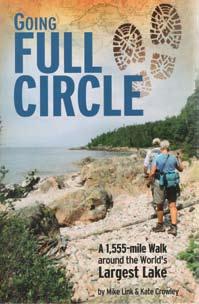
A 1,555-Mile Walk Around the World’s Largest Lake
By Mike Link & kate Crowley
L AKE SUPERIOR PORT CITIES, INC ., $18.95
In 2010, the Minnesota-based couple, both retired after careers as naturalists, walked around Lake Superior. The 1,555-mile trek took them five months, and they penned this book together. The 304-page paperback blends both their observations of the natural world they encountered along with an account of the ups and downs of such an undertaking.
—Javier Serna
By Steven I. Apfelbaum
BEACON PRESS, $25.95
The author, an ecologist, is noted for his research on how plants and birds respond to wildfires in the Boundary Waters. However, this is his account of restoration work on his 80-acre farm in southern Wisconsin, where he implemented the “land ethic” principles of conservation godfather Aldo Leopold. The book includes a foreword from Leopold’s daughter, Nina Leopold Bradley, who died last year in Baraboo, Wis. —Javier Serna
By Welby R. Smith
UNIVERSITY OF MINNESOTA PRESS, $34.95
Smith, a botanist for the Minnesota DNR, catalogs the state’s 49 wild orchids in this 400-page reference guide. Each orchid is fully described, with accompanying color pictures, diagrams and range maps to help with identification. The science of botany may be above the heads of many, but Smith has written this in-depth guide for the layman. It may be a bit too unwieldy to serve as a field guide, though.
—Javier Serna


By Sigurd F. Olson UNIVERSITY OF MINNESOTA PRESS,
$17.95
This book, a collection of the late, great environmentalist’s previouslypublished writings, was first published in this form in 1972. It has long been out of print. Olson, who was influential in the establishing the Boundary Waters, died in 1982. In Wilderness Days, he focused on those moments that reflected changing seasons of the Quetico-Superior region.
—Javier Serna


NATIONAL GEOGRAPHIC , $24.95
National Geographic has come up with its own grid-chart map with a focus on recreation. It includes basic overviews of fishing, hunting, camping and hiking opportunities. Major trails, such as the Superior Hiking Trail, Willard Munger Trail and North Country Scenic Trail are layered onto the maps. It has a scale of 1:175,000, or 2.76 miles per inch, providing more detail than a competing atlas that’s long been on the market. The 144-page atlas has the state broken down into 116 color pages.
—Javier Serna











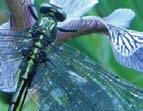
















































































Explore area history with a trip to the Ely-Winton Historical Society Museum. Located at Vermillion College, 1900 East Camp Street, Ely. Open Tues.-Fri. 12 noon - 4 p.m.

For information about placing your classified ad, contact amber at apratt@northernwilds.com

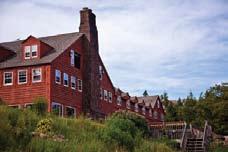
By Deane Morrison
August begins with Saturn above the bright star Spica, in Virgo, and Mars to the west, all near the sunset horizon. The Red Planet glides eastward, passing between Saturn and Spica on the 13th. On the 21st, the three objects form a nearly equilateral triangle above a crescent moon.
The Perseid meteor shower peaks the night of August 11-12. This should be a good year for it, since the first meteors come into view around 10 to 11 p.m., at least two hours before moonrise.
Full moons fall on August 1 and 31, but the second may not be a “true” blue moon. The Maine Farmers’ Almanac defined a blue moon as the third of four when four occur in a season. But a misreading of the almanac led to the notion that a blue moon is the second of two full moons in a month. Take your pick.
The full harvest moon shines the
night of September 29. This moon has long helped farmers working late to harvest crops because around the time of fullness it rises as little as 20 minutes later from night to night. October’s full hunter’s moon comes on the 29th.
In the morning sky, Jupiter, in Taurus, gets a visit from the moon September 8. The moon visits brilliant Venus on the 12th, and Venus passes south of the faint but lovely Beehive star cluster on the 13th and 14th. In August bright Arcturus leads the kite-shaped constellation Bootes, the herdsman, down toward the western horizon. In September the Summer Triangle of Vega (west), Deneb (east), and Altair (south) reaches its highest point in the south.
The autumnal equinox ushers in fall at 9:49 a.m. September 22. At that moment the sun will be directly above the equator and Earth will be lighted from pole to pole.


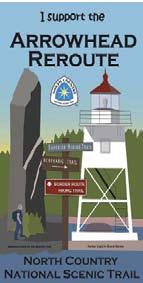
When Colonel William F. “Buffalo Bill” Cody (born Feb. 26, 1846) and his famous Wild West show first came to Duluth on Sept. 12, 1896, thousands attended the popular entertainment spectacular at 28th Avenue West and Superior Street.
He was already a living American icon, celebrated for his bravery and skills as a wrangler, dispatch rider, frontiersman, militia man, and buffalo hunter (his nickname came from killing 4,280 buffalo in 17 months while working to feed buffalo to Kansas railroad construction crews in 1867); in 1872, he had been awarded the U.S. Medal of Honor for gallantry as an army scout.
BY ELLE ANDRA-WARNER


tinations in North America and Europe with a Wild West extravaganza featuring rugged cowboys, sharpshooters (such as Annie Oakley), and American Indians (such as his friend Sioux Chief Sitting Bull during the 1885-86 season).
Less known is that for over 20 years, Buffalo Bill had a strong family and business connection to Duluth that began around 1892.
That’s when Hugh A. Wetmore, one of the two owners of the city’s newspaper People’s Press, drew up the first draft agreement giving Buffalo Bill 50 percent ownership of the printing plant and newspaper for $3,000.
Nellie’s brother Buffalo Bill financed the construction of the Duluth Press Building, the paper’s new four-story brick headquarters at 1915 W. Superior Street. During his six-day visit in January 1894, a grand reception was held on the building’s second floor to welcome Buffalo Bill, and more than 1,500 attended.
A month later, Duluth named Cody Street in West Duluth after Buffalo Bill.

Buffalo Bill was also the ultimate showman, who travelled to thousands of des -


A year later, in July 1893, Buffalo Bill’s widowed younger sister Laura Ella Cody, who went by her nickname Nellie, sometimes Helen, married Wetmore. She moved to Duluth with her daughter Mary Jester, renamed the newspaper Duluth Press and became its business manager.
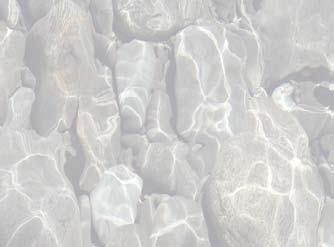










She hired her daughter as city editor, organized the Zenith Press Club (to give voice to women’s organizations), and by the end of 1894, with woman in charge of most departments, the Duluth Press was advertised as ‘’The Women’s Paper of the Great Northwest.”
Soon after her marriage,
In August 1895, the Wetmores built the 54room Cody Sanatorium which Nellie changed to a summer hotel and pleasure resort. It was destroyed by fire on Nov. 17, 1896. By then, the Duluth Press had stopped publication.
In 1897-98, Nellie and Hugh built a mansion, Codyview, on the same site as the sanatorium/resort (2618 N. 77th Ave. West) in today’s Bayview Heights area. It was said to have Duluth’s first bathtub. However, liens were filed against the Westmores for failing to pay Codyview’s building costs. Buffalo Bill dipped into his deep pockets, paid off their liens let Nellie and Hugh live there.
Nellie was soon on to her next project, writing a biography of her famous brother to be sold at his Wild West show.
In 1900, Nellie’s husband Hugh died; two years later, her daughter Mary left Duluth with her husband, newspaperman Robert
Allen; and in 1905, Nellie moved from Duluth to her brother’s namesake town of Cody, Wyoming. She died six years later while visiting her daughter in Pasadena, California; Buffalo Bill had rushed from Arizona to see her before she died.
Buffalo Bill brought his Wild West show to Duluth seven times, the last on Aug. 8, 1912. The following year, after owning Codyview for 16 years, Cody sold it to Alice Hain, the first of many owners.
Though Nellie and Buffalo Bill have long been gone, strange stories still swirl about them in Duluth. One tale alleges that Buffalo Bill buried a treasure with a buffalo skull 10 to 12 feet under Codyview. As the story goes, one owner tried unsuccessfully to locate it, but apparently only dug down five feet. There are reports of Nellie’s ghost being present at her beloved Codyview.



















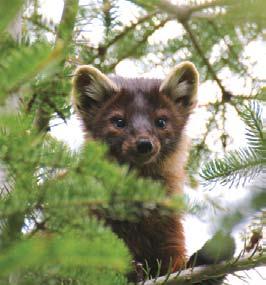



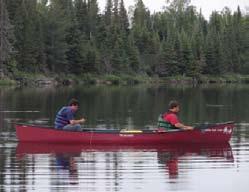


Welcome to Golden Eagle Lodge, a family oriented, year round resort located on the historic Gunflint Trail of Northeastern Minnesota. We are on the north shores of Flour Lake surrounded by the Superior National Forest; as we are the only residents on the lake, you can look forward to the quiet and solitude offered only from the true wilderness setting. We offer modern, housekeeping cabins to ensure comfort during your stay in the North Woods.
Each season has something special to offer; excellent fishing and canoeing in Summer and nationally-renowned Nordic Cross-



Country Skiing in Winter. Our 4 Seasons page will describe in detail how each season can help shape your vacation.
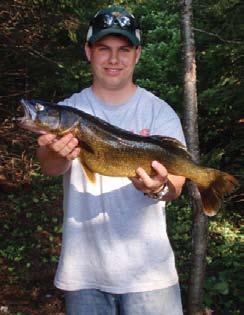
Try our 9-site campground which offers a quiet and personal service; each site comes equipped with water and electric hookups. We go out of our way to ensure every aspect of your visit will convince you to come back and see us again.
We know much time, effort, and expense is invested in a vacation, and we would be honored if you considered us as your vacation destination. You won’t be disappointed!





